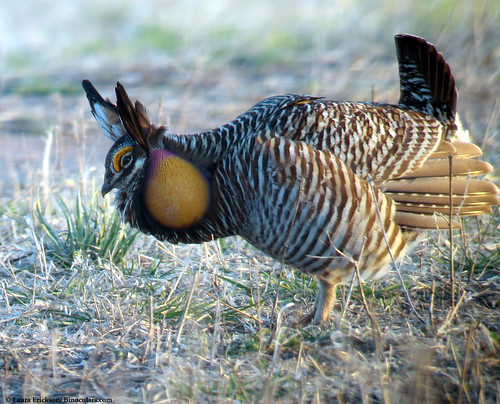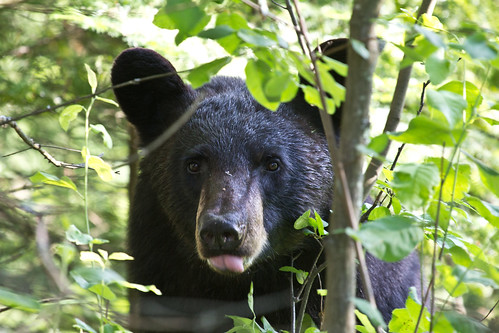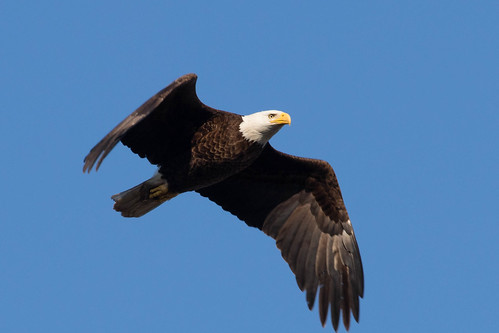My treasured friend Mick Fiocchi sent me a link to a story this week from the Wisconsin DNR, from their Snapshot Wisconsin newsletter, regarding 15 trail cams they set out, three each on five Greater Prairie-Chicken leks in central Wisconsin. Direct monitoring for prairie chickens involves a lot of human hours, because at each spot, the person must arrive while it’s still dark and remain until the displaying birds depart, often not until mid-morning. Arriving late or leaving early risks frightening the birds off their display grounds, disrupting them at their most vulnerable period of the year.
The cams picked up prairie chickens at all five sites, while humans detected the birds only at three sites. At the sites where they did detect them, the human observers saw more prairie chickens than the cams picked up, so human observers are still important, but the cameras provided photos not just during the morning displays but also in the evening, interestingly, taking more photos per hour during the evening than morning displays. Those Snapshot Wisconsin cameras also collected over 3,000 non-prairie chicken images including badger, coyote, deer, other birds, and more.
An article dated February 26 in the national Sierra Club magazine titled “Does a Bear Think in the Woods” focuses on studies of bear behavior and intelligence, centering primarily on Ben Kilham, who has studied bears in New Hampshire since 1996. His work is utterly fascinating, and author Brandon Keim mentions in passing about research into intelligence and communication in other species, including birds, noting that “ravens can plan for the future and demonstrate a degree of self-control comparable to great apes'” and “Japanese great tits, songbirds related to chickadees, use syntax—a linguistic property long thought unique to human language.” He also mentions that magpies can recognize themselves in a mirror.
Keim writes, “This research highlights an intriguing possibility: Could it be that much of North America is populated by hundreds of thousands of exceptionally intelligent nonhuman beings?” I’ve been harping on “this intriguing possibility” since the earliest days of producing “For the Birds,” but 33 years later, it is still apparently more intriguing and cutting edge than clear and obvious for anyone to speculate out loud about animals being intelligent creatures capable of genuine communication.
During Turner Classic Movies’ “31 Days of Oscars,” I watched the movie Close Encounters of the Third Kind. I still find it hilarious that we can accept the idea that people could somehow forge communication with aliens based on musical tones—how could we be sure the aliens were ascribing the same meaning to each tone that we did, when here in Minnesota, right this very moment, we can hear pure tones clearly meant as communication yet we still don’t have a clue know how to communicate with chickadees? Wouldn’t you think the scientists who think about finding and communicating with other forms of life “out there” would start by learning how to communicate with other forms of life right here on earth?
One day, the anthropocentric people who dismiss animal communication and intelligence as being of an entirely different order than human communication and intelligence will be dismissed the way people who once believed the earth is flat and at the center of the universe are now dismissed.
Our final "Birds in the News" story took place on February 23, in the world of college baseball, when Jacksonville State University was playing against Jacksonville University. You can see a short video with charming color commentary online. In the top of the eighth inning, an Osprey flew over John Sessions Stadium carrying a fish. When a Bald Eagle divebombed it, the Osprey dropped the fish into the outfield. The eagle circled lower, apparently trying to retrieve the fish, but before it could reach it, one of the Jacksonville University players ran out, grabbed the fish, and carried it off, giving his team a double win. They beat Jacksonville State 5-2 and the Bald Eagle 1-0.


